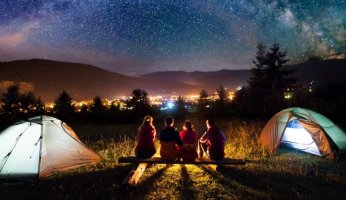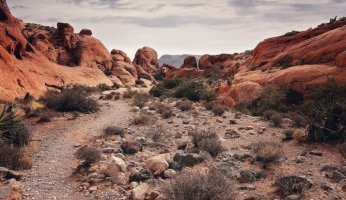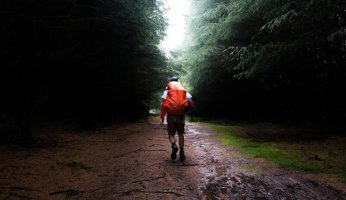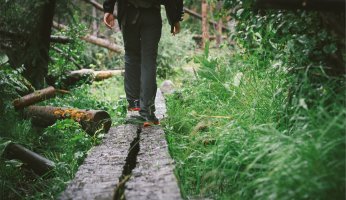How to Shower When Camping: 3 Practical Solutions & 6 Hygiene Tips!
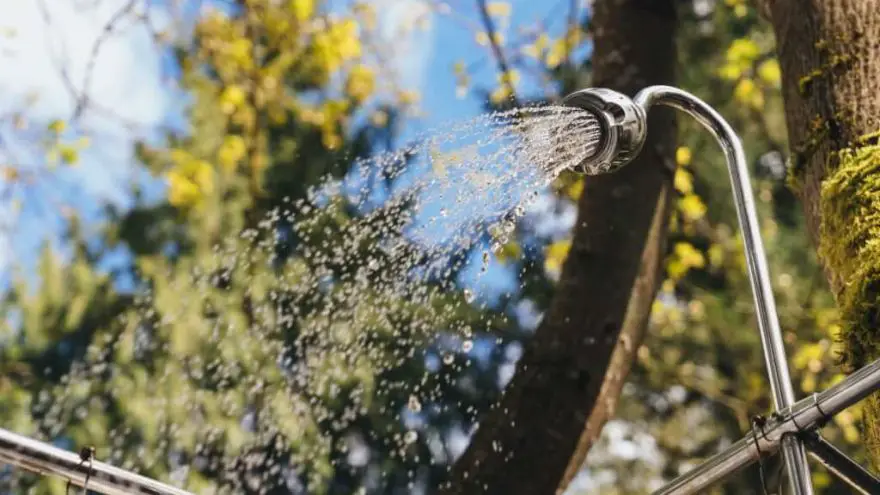 How to Shower When Camping: 3 Practical Solutions & 6 Hygiene Tips!
gearweare.net
How to Shower When Camping: 3 Practical Solutions & 6 Hygiene Tips!
gearweare.net
There is nothing like feeling the wind in your hair and the sun on your legs as you sit around your campfire, enjoying the smells, sounds, and sights of nature. But, oh wait, what’s the pongy smell? Oh, it’s you.
Adventuring and camping are brilliant, but the smell from unwashed bodies, not so much. Bathing and showering can be a nightmare when you’re camping, especially cramped in a small camper.
Camping or not, everyone loves a hot, soapy shower. Of course, that might not be 100% possible when you’re on the road but knowing how to shower when camping can make the experience much more pleasant.
So, carry on reading to find the best ways to keep up your camping hygiene with DIY camping showers.
Table of Contents
Can You Shower at the Campsite?
Anyone who hates the thought of going without a shower when camping (you’re not alone) will be happy to know that you can shower while camping.
There are many ways to keep up your camping hygiene; all you need to do now is figure out the best methods.
How Do You Take a Shower While Camping?
Many people ponder how to shower when camping, especially once the excitement of their trip has set in. When you’re wild camping or staying in a campsite without full facilities, camping with no running water can seem a nightmare. But it doesn’t have to be.
Let’s explore all the ways you can avoid no-shower camping.
1. Try a Portable Camp Shower
The beauty of the modern world has made DIY shower camping a breeze. The only thing that will stop you is your vehicle’s space, your budget, and whether or not you can brave the cold. But with endless portable camp shower options, you’ll be able to find the proper camping shower for you.
Let’s explore:
- Electric Camping Showers. These DIY camping showers utilize a 12v or rechargeable battery-powered pump. This pump draws water from a container to let you bathe. Without a way to regulate the flow rate, these are best used for areas with no water conservation issues.
- Pressurized Camping Showers function as a shower and a water storage tank, making them a perfect camp shower if you don’t have any water storage.
- Gravity Camping Showers. Although super basic, these showers are helpful because they’re usually more compact and have fewer moving parts to break. All you need to do is fill a bottle or bag, hang it over your head and let gravity take over. But on the downside, they can be troublesome to use with a pretty low flow rate.
2. Wash in the Wild
‘Where to shower when car camping’ is a question I see often, and a good one. Well, what’s the point of adventuring if you can’t make the most of everything nature has to offer.
If you can brave a little cold weather and are camping near a stream, lake, hot spring, or river, jump in and get clean.
But you do need to keep in mind a couple of points.
First, ensure it’s not private land, and wild swimming or bathing is permitted. Always use environmentally friendly, safe, and biodegradable soap.
And most importantly, make sure there are no risks of drowning.
3. Public Showers
Whenever I book into a campsite (and it’s always best to book in advance when you can), I always ask myself, ‘do campgrounds have showers.’ If your campsite does have showers, this is one of the easiest methods for showering when camping or traveling.
The only thing you might struggle with is finding campsites with proper facilities, especially when you’re on the move. Established and large campgrounds usually have the best facilities and access to pay-for-use showers.
Also, look out for truck stops and services that often offer pay-for-use showers, public pools, outdoor showers at public beaches and gyms.
Although most are cleaned regularly and well maintained, wear sandals while showering.
How Do You Deal With Not Showering While Camping?
When you’re heading out into wild, remote areas, you may need to accept that showering while camping isn’t an option.
Have a sponge bath. It’s not everyone’s favorite option, but when you’re camping without running water, it’s better than becoming grimier by the day.
Sponge bathing is just what you’re thinking, some soap, a washcloth, and a little warm water. Even this form of bathing when camping can leave you completely refreshed even without a camping shower. This kind of maintenance bathing will keep you going until you get back on the grid.
Other methods for bathing without access to water include using baby wipes, a water bottle (bigger the better), and public sinks (make sure you have some privacy).
What is a Dry Shower?
Sometimes, dealing with no shower camping feels impossible when there is minimal access to water. When you need to conserve water for essential hydration, having a dry shower can help you feel fresh when on the move.
A dry shower is simply showering in a can. Yes, I know it sounds impossible, but it’s entirely possible to clean up without water. In addition, using products like Muc-Off Dry Shower allows you to have a creative antibacterial body wash without water.
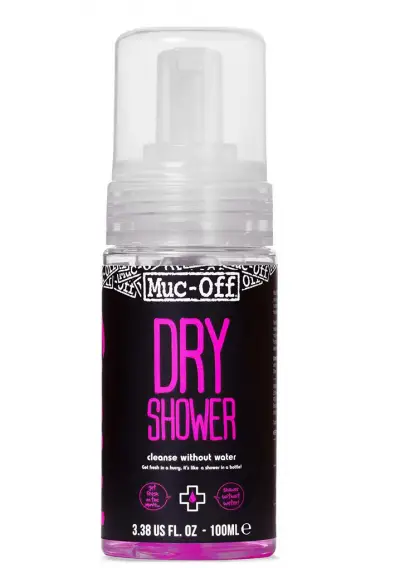
Dry shower kills germs and odour causing bacteria with gentle, coconut-based ingredients. As a result, you can feel fresh and clean even when you’ve not showered for days.
Suppose you’re wondering how to wash hair while camping; pair dry shower with dry shampoo so you can wash your hair too.
When your locks start to get greasy and lank, spray a few squirts of dry shampoo and rub it in for fresh hair.
6 Hygiene tips
For some, getting grubby and smelly is all part of the camping fun. But most of us prefer to keep up our camping hygiene. That’s why it’s so important to know how to shower when camping.
But there are other ways to keep yourself clean when in the wild. We’ve got some great hygiene tips for you.
1. Always use hand sanitizer, especially after bathroom breaks or when handling food.
2. Remember your floss, toothpaste and toothbrush, and environmentally-friendly soap and shampoo.
3. Bring extra water for washing underwear and sponge baths.
4. Bring at least two outfits (depending on the length of your trip), so you have a spare that you can wash and hang out to dry when you have access to water.
5. Always pack a light, microfibre towel so you and your towel can dry quickly.
6. Pack clothing made of synthetic material that wicks moisture and lets you stay cool and fresh. Clothing like cotton soaks up sweat, leaving smells and bacteria to breed, so it’s best to avoid these materials.
Hopefully, you now feel confident getting out into the big wild world, even without access to running water.





